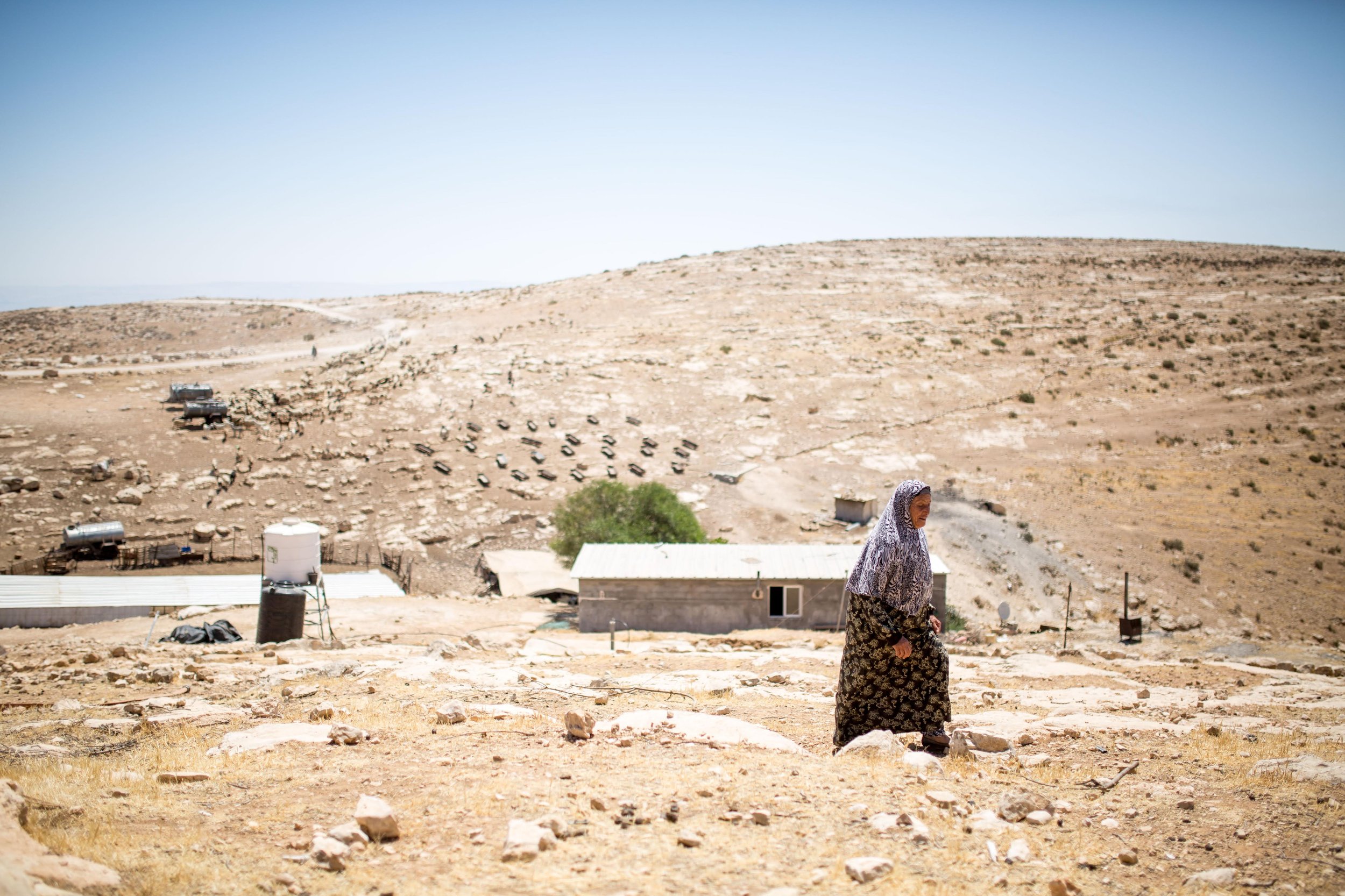
history
Masafer Yatta / South Hebron Hills is a beautiful mountainous region dotted with over thirty ancient Palestinian villages, on the Southern edge of the West Bank. The villagers lead a farming lifestyle, mostly shepherding, with many living in old stone structures and caves.
The small hamlets appear on maps from before the establishment of Israel, yet the Israeli occupation doesn’t accept their existence and many of them were actively erased from Israeli maps.
The pressures put on communities by the occupation to leave their homes is immense. One central tactic used to cleanse communities and carry out this expulsion is Israel’s policy of systematic home demolitions. The Israeli Civil Administration in the West Bank rejects more than 98% of Palestinian requests for building permits, while allowing settlers in the area to build freely. This colonial policy uses military law to force entire families in Masafer Yatta to leave their historical lands. Because their homes, schools, water wells, and roads are considered “illegal” by the army and marked for destruction, their mere existence, on their private land, is essentially made illegal.
No Other Land is the first documentary to shed light on the policy of forced expulsion through home demolitions. Settler and army violence, harassment and encroachment are another primary tool which makes life impossible and seeks to force communities to leave. This violence can sometimes receive international or local attention. We wanted to tell the story of how this violence is part of and connected to the larger system of ethnic cleansing that is also driven by the policy of home demolitions and permit refusal.
When communities are demolished, families in Masafer Yatta and the South Hebron Hills have few options. They can rebuild and risk future demolitions (many families have suffered multiple demolition proceedings), become homeless, or rent houses in crowded Palestinian cities where there is no space for grazing sheep and cultivating land. The expulsion of communities is thus not just the loss of a community or a physical village, but also the loss of a way of life.
Since October 7th, the situation in the West Bank has dramatically deteriorated: settler violence and threats forcibly expelled 16 entire Palestinian villages all over the West Bank, several of which are in Masafer Yatta and the South Hebron Hills, and most of which are shepherding communities similar to those of Masafer Yatta.
Beyond the demolitions and the settler violence, in 1980, the Israeli military declared a huge swath of Masafer Yatta a “closed military training” zone - meaning it was officially declared off limits for Palestinians. As later revealed in two secret Israeli state documents, Ariel Sharon, former Israeli Prime Minister, then Agricultural Minister, explained at the time that this was done to displace the villages and allocate their land to Israeli settlements. In 1999, the military ordered all Palestinians living in Masafer Yatta to leave so soldiers could use their land as a military training ground, displacing over a dozen villages.
Residents returned, but in 2022, after a two-decade long legal battle, the high court gave the military a green light to carry out the expulsion. If acted upon, this would be the largest single act of forced transfer carried out in the West Bank since it was occupied in 1967. The decision to destroy the Palestinian villages and evict around 1,800 people so the military can use their land for training exercises triggered worldwide condemnation and is considered by many, including Amnesty International and UN Human rights experts, to be a war crime.
